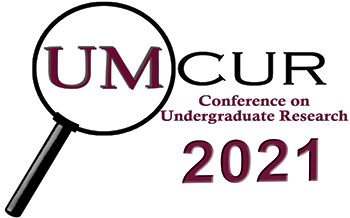Project Type
Presentation
Faculty Mentor’s Full Name
Dora LaCasse
Faculty Mentor’s Department
World Languages and Culture
Abstract / Artist's Statement
All nouns, determiners, and many adjectives in the Spanish language are grammatically designated as either masculine or feminine, and the default is always the masculine form. For example, “the tall boy” in Spanish is “el chico alto”, “the tall girl” is “la chica alta”, and if there is a group of tall children the plural form is the masculine “los chicos altos” even if there are females in the group. This binary gender division and masculine default can cause harm, however, when used in reference to women and non-binary people. This paper explores the recent movement to include a third designator to allow for gender-neutral words that refer to animate subjects in order to be more inclusive to the two aforementioned groups. By synthesizing linguistic, psychological, and first-hand accounts, I outline the solutions being offered by Spanish-speaking communities, and propose a path forward in formalizing a gender-neutral option. There are a variety of different options being used, but the option that has gained the most popularity in Spanish-speaking communities is the use of the letter “e”,. Using the previous examples, the gender-neutral option with “e” would be “le chique alte” and “les chiques altes”. This option already has fairly widespread use and I offer various ways to further it’s implementation in Spanish-speaking communities.
1. Beit-Hallahmi, B., Catford, J. C., Cooley, R. E., Dull, C. Y., Guiora, A. Z., & Paluszny, M. (1974). “Grammatical gender and gender identity development: Cross cultural and cross lingual implications”. American Journal of Orthopsychiatry, 44(3), 424-431. doi:http://dx.doi.org.weblib.lib.umt.edu:8080/10.1111/j.1939-0025.1974.tb00895.x
2. “Uso De Lenguaje Inclusivo.” Argentina.gob.ar, 20 Oct. 2020, www.argentina.gob.ar/noticias/uso-de-lenguaje-inclusivo.
3. Miguel Ángel Sarmiento Salinas (2015). “La e para la desexualización del género en beneficio de la motivación de ELE en Suecia.” La enseñanza de ELE centrada en el alumno (pp. 863-872). Y. Morimoto, M. V. Pavón Lucero, R. Santamaría Martínez (Eds.). ASELE.
Category
Humanities
Les Chiques: The Addition of a Third Gender-Neutral Option in the Spanish Language
All nouns, determiners, and many adjectives in the Spanish language are grammatically designated as either masculine or feminine, and the default is always the masculine form. For example, “the tall boy” in Spanish is “el chico alto”, “the tall girl” is “la chica alta”, and if there is a group of tall children the plural form is the masculine “los chicos altos” even if there are females in the group. This binary gender division and masculine default can cause harm, however, when used in reference to women and non-binary people. This paper explores the recent movement to include a third designator to allow for gender-neutral words that refer to animate subjects in order to be more inclusive to the two aforementioned groups. By synthesizing linguistic, psychological, and first-hand accounts, I outline the solutions being offered by Spanish-speaking communities, and propose a path forward in formalizing a gender-neutral option. There are a variety of different options being used, but the option that has gained the most popularity in Spanish-speaking communities is the use of the letter “e”,. Using the previous examples, the gender-neutral option with “e” would be “le chique alte” and “les chiques altes”. This option already has fairly widespread use and I offer various ways to further it’s implementation in Spanish-speaking communities.
1. Beit-Hallahmi, B., Catford, J. C., Cooley, R. E., Dull, C. Y., Guiora, A. Z., & Paluszny, M. (1974). “Grammatical gender and gender identity development: Cross cultural and cross lingual implications”. American Journal of Orthopsychiatry, 44(3), 424-431. doi:http://dx.doi.org.weblib.lib.umt.edu:8080/10.1111/j.1939-0025.1974.tb00895.x
2. “Uso De Lenguaje Inclusivo.” Argentina.gob.ar, 20 Oct. 2020, www.argentina.gob.ar/noticias/uso-de-lenguaje-inclusivo.
3. Miguel Ángel Sarmiento Salinas (2015). “La e para la desexualización del género en beneficio de la motivación de ELE en Suecia.” La enseñanza de ELE centrada en el alumno (pp. 863-872). Y. Morimoto, M. V. Pavón Lucero, R. Santamaría Martínez (Eds.). ASELE.
